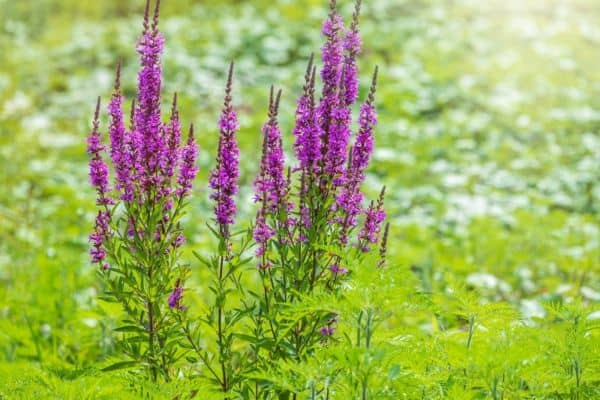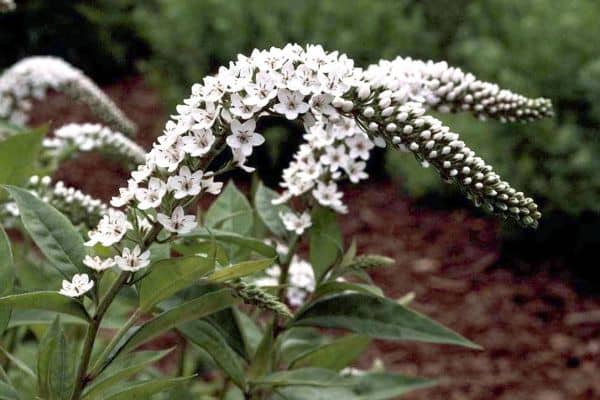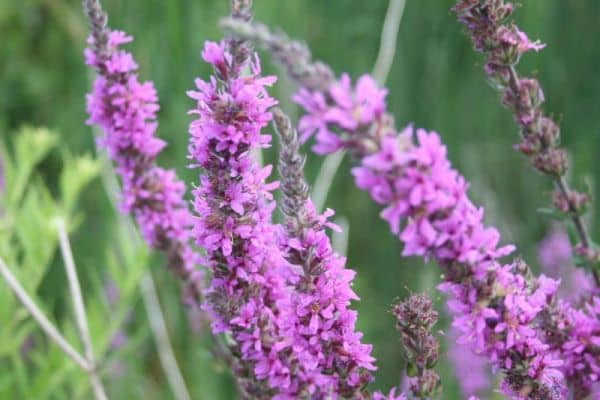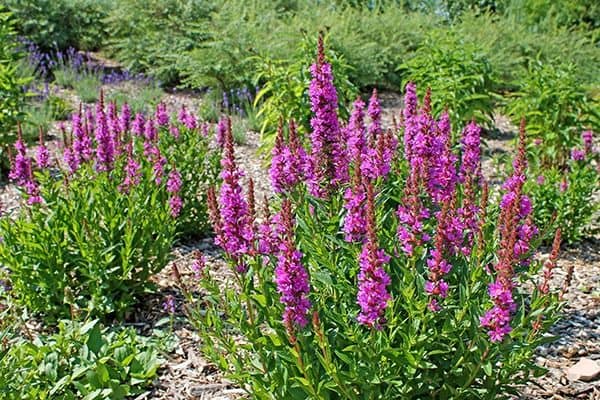Loosestrife is a beautiful flowering plant for your home. They have a total of 182 species available and they can survive in most of the surviving conditions like full sun, high and cold temperatures, and many more.
In this section, we will be learning how you can grow and care for a Loosestrife Plant with a complete guide.
Where Can We Plant Loosestrife
Loosestrife Plant loves to be in a full sun location and rich, well-draining soil which is one of the best ways to get the best result of the plant, during the summer heat that needs some partial shade.
You can plant them in a container or create a weed barrier or bamboo barrier to stop them from their running habit. Also, remember that regular thinning keeps this plant under control as they spread aggressively through underground rhizomes and have the ability to root anywhere a node touches the ground.
Source: Gardening Know How
Loosestrife Planting Tips
The best season to plant loosestrife Plants is in spring and autumn. To plant you will have to prepare a bed of nutrient-rich, well-draining soil, amending with compost or organic matter if needed by the plant or the soil.
Then you can dig a hole slightly larger than the plant nursery container after digging the hold you can remove the plant from the container while not damaging any of the rhizomes or roots. After you remove the plant you can put the loosestrife plant in the hole remember to put the plant at the same height as the container. Then you can fill the hole with soil and press down the soil with your hand so the air will be removed from the pockets.
Then all you have left is to water your loosestrife Plant from time to time and care for the plant according to its requirements and season.

How to Care Loosestrife
Loosestrife plants are easy to care for when their basic needs are met. So here are some of the points to make up while caring for Loosestrife plants:
1. Light
As of light Loosestrife plants go well with a full sun as full sun can also help Loosestrife plants to get the best foliage colors and prevent plants from flopping. But some varieties which have gold foliage or variegated can bleach out some of the leaves in full sun especially when they are in extreme southern exposures. Remember if the bleach out some of the leaves worries you then you can simply plant them where they will be sheltered from the sun in the afternoon.
2. Soil and Water
As for soil Loosestrife plants require well-drained, consistently moist soil for them to grow properly. Also, nutrient-rich soil can extend bloom times and fuel the perennial’s rapid growth.
As for water Loosestrife plants require weekly watering for most of the year except they need twice weekly during the hottest parts of the summer. Just remember that some Loosestrife species may be from wetlands and need wet soil as you can ask the nursery if their plant species is from wetlands or not.
3. Temperature and Humidity
As for temperature Loosestrife plants can survive efficiently in both cold winters and return in spring as long as you water them regularly in time. As for humidity, the Loosestrife plants can survive in high and low humidity but when the humidity is very high you can simply cut back on watering them and they will be fine.

4. Fertilizer
As for fertilizer, Loosestrife plants may not need but as for soil quality or growth, you can simply give them a balanced fertilizer during the spring season. You can give them slow-release granular 10-10-10 product and that will do the job properly. Remember to use the fertilizer as per the product instructions and always use the correct amount of it.
5. Pruning
As of turning loosestrife plants go dormant during the winter and during that point, you cut the plant back close to the ground and everything will be fine.
FAQs
Q. Is Lysimachia Clethroides Toxic to Dogs?
No, Lysimachia Clethroides is not toxic to dogs. Not only dogs Lysimachia Clethroides is also not toxic to humans and any type of animals like dogs, cats, and horses as it is mostly used as a herbal medicine.
Q. What is the Gooseneck Loosestrife Used For?
Loosestrife is used as a herbal medicine but gooseneck loosestrife is used to naturalize the overflow areas as an interface between woods and open ground.
Q. What are the Benefits of Yellow Loosestrife?
Yellow Loosestrife also known as Lysimachia vulgaris L. is mostly used as a natural herb to cure different diseases like diarrhea, bleeding, wound healing, and other purposes.
Also Read: Chill Out! Your Ultimate Guide to Selecting Cooling Sheets And Its Alternatives
